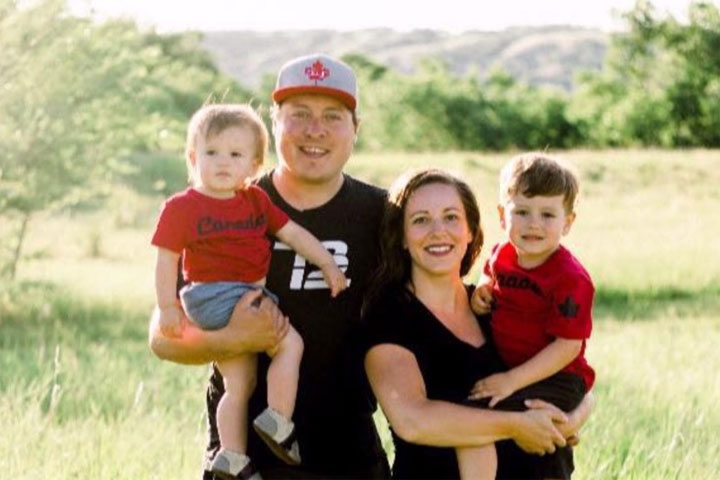UPDATE: Aly Jenkins’ widower Scott Jenkins posted on Facebook that baby Sydney is expected to be discharged from the neonatal intensive care unit at the hospital on Oct. 29.

He also posted that all machines have been removed and she loves cuddles.
The original story continues below.
The death of a Saskatchewan curler is shedding light on potentially fatal complications during childbirth and an organization says Canada needs to improve the tracking of its maternal mortality rate.
Aly Jenkins passed away suddenly on Oct. 20 after experiencing complications during labour and delivery of her third child, Sydney, according to a GoFundMe page.
The Saskatchewan Health Authority (SHA) said in cases of maternal death, which are rare, the regular process is to conduct a clinical review and debrief.
“A clinical review occurs in the case of a rare or uncommon occurrence in a medical environment,” read the statement from SHA.
“It provides all health care providers involved an opportunity to examine what has occurred to see if there are any process improvements that could be found, with a goal to improve the quality and safety of care.”
Jenkins’ family and teammates were reportedly told the 30-year-old athlete died of an amniotic fluid embolism (AFE).
“(AFE) is a rare condition, happens maybe one in 20,000 births,” said Dr. Jennifer Blake, CEO of the Society of Obstetricians and Gynaecologists of Canada, on Oct. 24.
“Fluid from the amniotic sac — that’s the sac that’s around the baby — gets into the mother’s circulation and then gets into the lungs and causes a complete collapse of the mother’s ability to give oxygenated blood to her brain and to her vital organs and can lead to death.”
“We don’t know how to prevent (AFE) but we can’t predict it, we can’t foresee it, and all you can do is, in the event that it happens, support life in the hopes that it’s not just a severe one that the mother may be able to survive.”

The Society of Obstetricians and Gynaecologists of Canada tweeted on Oct. 23 it’s working to bring about a surveillance system to report preventable maternal deaths in the county.
The organization, based in Ottawa, is calling for a broad surveillance system in which deadly and near-deadly incidents can be recorded and analyzed for gaps in care and to determine more effective practices.
In addition, Blake said the country needs a detailed confidential inquiry into each case to learn how to prevent future deaths.
“Maternal mortality actually encompasses mothers who die during their pregnancy or, and here is where the definition varies, in the first six weeks to one year following the birth of their baby,” Blake said.
“So that would include mothers who perhaps might die from complications like hypertension of pregnancy or cardiac diseases or mothers who might have mental health/depression problems and who are at risk of suicide or all of the other things that can happen that are related to the fact that she was pregnant. So when we put all of those numbers together, that’s how we calculate the maternal mortality rate in the country.”
“I think that we’ve got really good models that we can build on,” she said, noting in the United Kingdom they all collaborate to share their records. “There’s a panel that does the review. The review makes recommendations to say, ‘was this a preventable cause of death’ and ‘would it have required in order to prevent it.’”
Blake said there about 400,000 births in Canada annually and maternal deaths are increasing.
“It’s only in the last few years where we’ve begun to see our maternal mortality rates in Canada begin to increase, probably over the last 12 years. … But having said that, I think women should not be afraid of pregnancy,” she said.
“To be attended by skilled (health) providers, that’s something that we have in Canada and to have access to the resources that you need in the event that there is an unforeseen complication. So we have those things in place and … well, it’s a sobering event when you lose a mom and you think ‘oh my god, I’ve taken this all for granted.’ We should never take it for granted. The safety of our system is something we have to safeguard, but we do have a safe system.”
Teammate Sherry Anderson, based in Saskatoon, expressed sadness on social media, along with much of Canada’s curling community.
According to a Facebook post from Jenkins’ widower Scott Jenkins, baby Sydney is still in the neonatal intensive care unit but showing positive signs and more activity.
A celebration of Jenkins’ life was scheduled for Oct. 27 at the Brian King Centre in Warman, Sask., at 2 p.m.
— With files from the Canadian Press




Comments